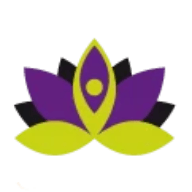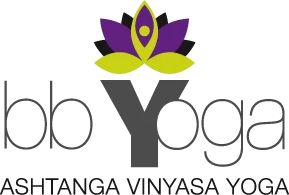What is Hatha Yoga?

Is Hatha yoga a style of yoga?
As I think that Yoga (or better, the practice of Yoga postures) became extremely fashionable but with regard to what I read, there is more and more negligence on the argument, I would want (very briefly, and without any pretention of being able to deepen the history neither to give a perfectly completed historic frame – I am not a historian) to try to make a little more clarity on the subject.
Are you a practitioner of the Ashtanga yoga of Sri K. Pattabhi Jois’school? Or an Iyengar one maybe? Or of a Vinyasa flow one? Or do you practice Sivananda?
Well, surprise! In the whole 4 cases then we can say that you practice Hatha yoga!
And this assertion is valid for any style of yoga-asana you practice!
What means Hatha?
The word hatha means will or effort. Hatha Yoga concentrates its attention on sequences of physical exercises, knew as asanas or postures, create to align muscles and bones and to strengthen the body. The postures, executed with the breath, have the purpose also to open the canals of the body through which the energy passes, by allowing a free flow, in particular along the spinal column.
The word Hatha is also collectively translated as union of two terms: “ha” which means sun and “tha” which means moon. It reminds the necessity of balance between the male, active, hot aspects (the “sun” thus) and highly-rated feminine, susceptible, cold ones (the “moon”), which are present in each of us. Hatha Yoga is thus a journey to be practiced to create a balance and a unity between opposites. Our body will learn to develop balance, strength and flexibility by balancing in every asana the effort and the muscular looseness.
Hatha Yoga is a powerful instrument of auto-transformation. It asks us to pay our attention on the breath, which is going to help us to stop the fluctuations of the mind, the one who I like to call ” the continuous thoughts”. (Patanjali, Y.S 1-2)
Why is it incorrect to define Hatha Yoga a single “style” of yoga? The brief Yoga history (of course not at all complete) which follows, will explain it.
Yoga is not a religion but it is a philosophy and its born cradle it is India. I try to make an historical picture even if the ” western habits ” are a little tightened in this speech.
Generally, are recognized 4 historic Yoga periods for which the correct dates change according to texts whom we make reference to.
Quickly let us review them to see where and how Hatha Yoga is born:
VEDIC PERIOD: The Vedas and Yoga
(From a very hard dating to be made, until near by 1500 B.C.)
The Vedas are the oldest Indian sacred texts; we find a first written track when Arii population invades northern India, probably around 2.200 B.C. The root of the Sanskrit word “vid ” means seeing, knowledge or wisdom; thus the Vedas can so be considered as the books on the knowledge (with this meaning we could say that also the Bible or the Koran are Vedic texts).
The first written references to yoga are made going back to this period.
PRE – CLASSIC PERIOD: the Indian philosophies and Yoga
(Until near by 500/600 A.D.)
In this period are outlined the Indian philosophies which represent real schools of interpretation of the Vedas (orthodox philosophies) or that do not recognize the authority of them (heterodox philosophies). They so see the light 6 Indian orthodox philosophies, called also Darsana, which we can translate as “point of view” or perspective and who are:
- Nyāya which is the logical point of view, with a dialectic method.
- Vaiśeṣika is the point of view of the “distinction”, the “peculiarity” or the “discriminative” (vishesha), in which the world can be analyzed according to 6 (then 7) categories.
- Sāṃkhya with a cosmological psychology point of view, its method is the intellectual speculation.
- Yoga or Sāṃkhya-Yoga is the psychological or psychic point of view related to the identification, to the perception and to the intuition of the subtle world and its method is the control of the mind, the senses and of the internal powers.
- Mīmāṃsā is the theological point of view and the hermeneutics of the reflection, and its method is the study and the search in the sacred Writings and the revelation found into them.
- Vedanta is the metaphysical point of view, with an abstract speculation method.
Now Yoga begins to assume its well-defined way.
The heterodox philosophies are:
Ethical Idealistic Buddhism;
Pluralistic Jainism.
CLASSIC PERIOD: yoga Sutra, Raja Yoga and Hatha Yoga
(Until near by 1700 A.D.)
This historic phase sees the birth of the Yoga Sutra, the first codification of the Yoga’s teachings, in the work of Patanjali and which is constituted by 196 aphorisms, subdivided into 4 chapters: Samadhi Pada, Sadhana Pada, Vibhuti Pada and Kaivalya Pada. Always during the same historic phase, but centuries after Patanjali, it is appearing another text considered as a classic one: Hatha Yoga Pradipika, by Svatmarama, dated around the 1400 A.D. and considered the main text of Hatha Yoga (Hatha Yoga and not “Yoga”). It is also subdivided into 4 chapters: Asana, Pranayama Mudra and Samadhi.
Of the same period there are 2 other historic texts that deal with Hatha Yoga:
Gheranda Samhita by Ghera;
Siva Samhita, authors unknown, dated around 1700 A.D.
Well, if you read so far, thus let us try to understand the difference between Hatha Yoga and Raja Yoga.
The purpose of Yoga it is to take his apprentice to conquer his spirit and to feel his own “self”; the one who succeed in mastering this practice, is called Raja Yogi (words Raja mean “King”), as he will be able to “conquer” his own self and his own senses. Although Patanjali never used the terminology Raja Yoga, it is quite common to refer to Raja Yoga as the Classic Yoga of Pantanjali, also well known as Ashtanga Yoga (be careful, not in the meaning of the ” Ashtanga ” practice!).
Then we can say that: Raja Yoga = Ashtanga Yoga = Yoga of Patanjali = Classic Yoga
Many people believe that Raja Yoga and Hatha Yoga are completely different, seeing Raja Yoga as a practice of the spiritual discipline and Hatha Yoga as a simply physical practice.
We can certainly assert that texts written on Hatha Yoga give more indications on the physical practice compared to the Sutra, but the reality is that Raja Yoga and Hatha Yoga – although both approaches are different – can be considered complementary and bringing to the same practice.
Following a little part of an interview done to one of the biggest masters of the modern Yoga, B.K.S. Iyengar:
” Many are those who think badly and act with the false idea that Hatha Yoga is a simply physical yoga, and that the yoga of Patanjali is a simply spiritual yoga. My point of view is that these two forms of yoga are complementary and additional and that a narrow separation between both, comes from a lack of deep understanding of these two forms of yoga.
As God is one, but it is known with thousand names, similarly yoga is one as it cannot be a simply physical practice or a separate mental or spiritual one; it (Yoga) is so also known with various names as it stands Raja Yoga, Hatha Yoga, Ghatha Yoga, Mantras Yoga, Laya Yoga, Trataka Yoga, Kundalini Yoga, Shaktipatha Yoga, Anasakti Yoga and Amrita Yoga but it is still one “.
Thus, is Hatha Yoga a style of Yoga?
Of course not, as you will have understood, Hatha Yoga it is “the Yoga”!
POSTCLASSIC PERIOD: Yoga in our days
From this period we see the world expansion of yoga and the translation and the broadcasting of yoga texts. Following, I will remind some key Yoga Masters (of course, not all of them):
1863-1902: Swami Vivekenada carries the Hinduism and the yoga in the North of America (1893);
1887-1963: Swami Sivananda, creator of the asana series called ” Rishikesh series “;
1888-1989: Tirumalai Krishnamacharya, known as the “father” of the “modern” Yoga;
1893-1952: Paramahansa Yogananda, well known for the book Autobiography of a Yogi and for the fact that he introduced Mahatma Gandhi in Kriya Yoga;
1899-2002: Indra Devi, one of the first western (woman) yoga teacher, first pupil of Tirumalai Krishnamacharya in a time during which following a lesson was allowed only to the Indian men;
1923-2009 Swami Satyananda Saraswati, pupil of Swami Sivananda, founder of the Bihar School of Yoga and author of 80 books on yoga.
From Krishnamacharya divert the different schools founded by his pupils, thus the most known ones are the following:
Indra Devi
B.K.S. Iyengar – Iyengar Yoga
Sri K. Pattabhi Jois – Ashtanga Yoga
K V. Desikachar – Viniyoga
Indra and A.G. Mohan
As we can understand, Yoga is an ample and complex subject, certainly not “exclusively physical” as it is mostly known in our days.
I think that it doesn’t matter the type of yoga-asana that we practice, but let’s never forget a thing: Yoga is one, although with multiple aspects. The physical practice is only one aspect!
The one, who says to you that the only traditional Yoga is Hatha Yoga, has probably never understood and never learnt what real Yoga is.
Ari Om Tat Sat
By Beatrice Bassi
The post What is Hatha Yoga? appeared first on BBYoga.

Beatrice Bassi
Yoga et
rééducation posturale
Saint Tropez - France
Email:
info@bbyoga.fr
Tel.
+33 624 794098
Menu
Tous droits réservés | bbYoga. N. SIREN 820942621




